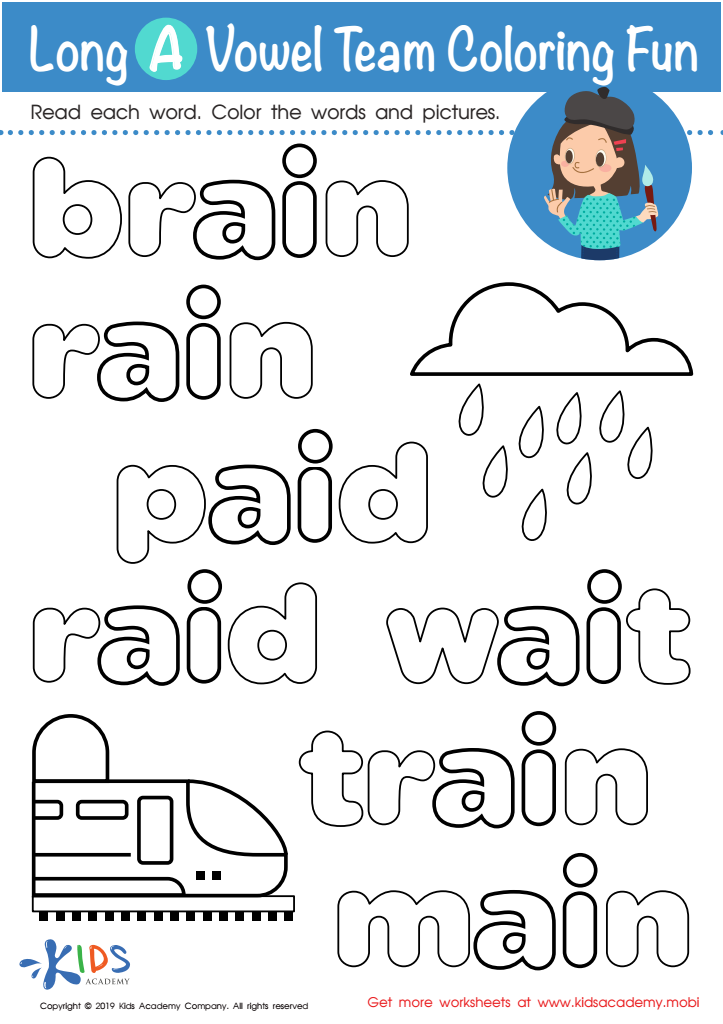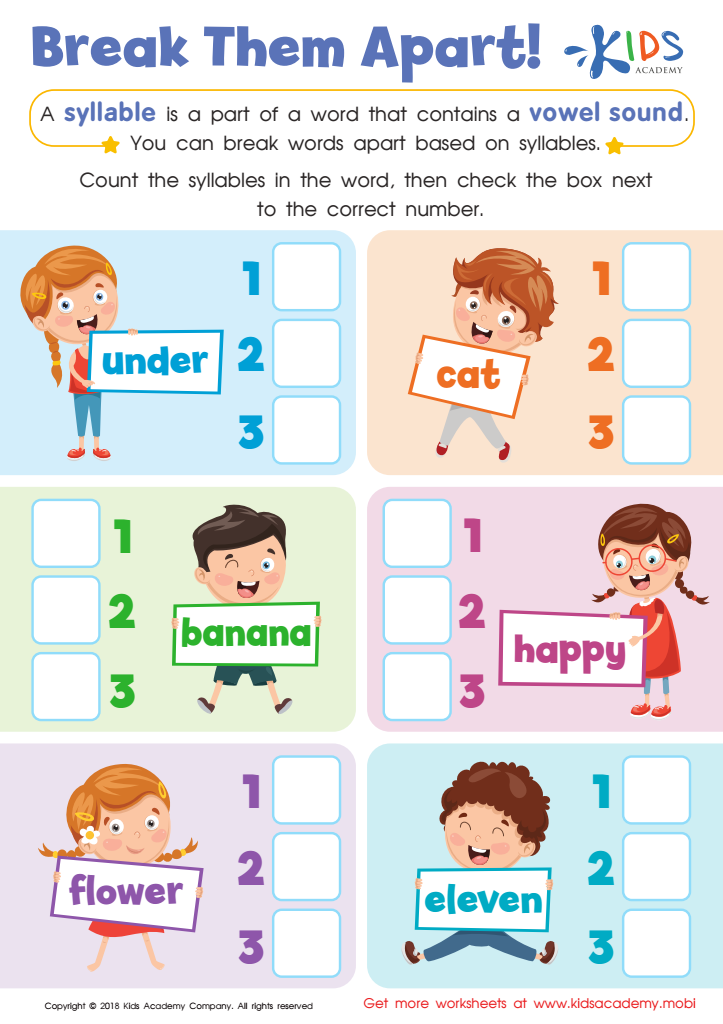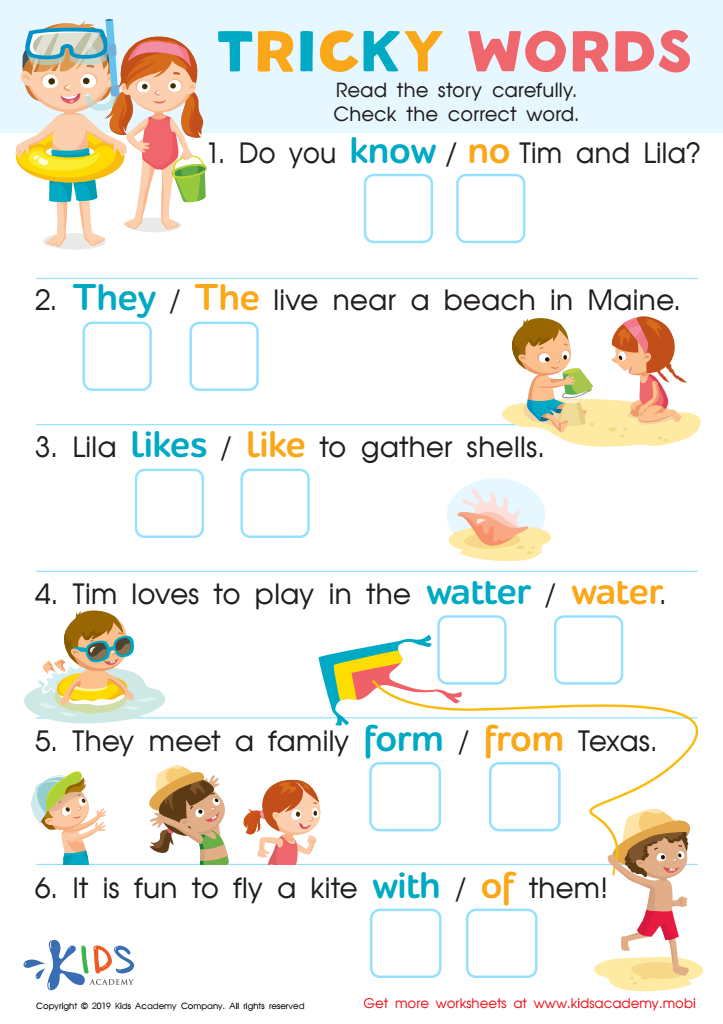Reading comprehension Normal Elementary Phonics Worksheets for Ages 5-7
4 filtered results
-
From - To
Discover engaging reading comprehension worksheets tailored for children ages 5-7 to enhance their phonics skills! Our "Normal Elementary Phonics Worksheets" feature a variety of fun and interactive activities designed to support early learners in mastering essential reading concepts. Each worksheet focuses on phonetic awareness, vocabulary building, and comprehension, making learning enjoyable and effective. With colorful illustrations and age-appropriate content, kids are motivated to explore the world of reading. Perfect for classroom use or at-home practice, these worksheets help foster a love of reading in young readers. Download your free printable worksheets today and watch your child flourish!


Long A Vowel Team Coloring Fun Worksheet


Reading: Break Them Apart Worksheet


Tricky Words Worksheet


Long and Short E Worksheet
Reading comprehension is crucial for young learners aged 5-7, particularly when integrating phonics. At this foundational stage, children develop essential skills that form the basis for their future academic success. Phonics instruction teaches children the relationship between sounds and letters, enabling them to decode words and enhance their reading fluency.
When children grasp phonics, they become more confident readers, which directly impacts their comprehension abilities. Understanding what they read is vital because it allows them to engage with stories, gather information from texts, and develop critical thinking skills. As parents and teachers foster these abilities, they empower children to explore the world through books, which can ignite a lifelong love for reading.
Moreover, comprehension skills are not just about enjoying stories; they are deeply connected to overall academic performance. Children who struggle with reading comprehension may face challenges in other subjects, which can affect their self-esteem and motivation. Therefore, investments in reading comprehension and phonics at an early age can lead to better educational outcomes, supporting children in becoming proficient readers who can tackle more complex texts in the future. For parents and educators, prioritizing phonics and comprehension is essential for nurturing capable, confident learners.
 Assign to My Students
Assign to My Students









